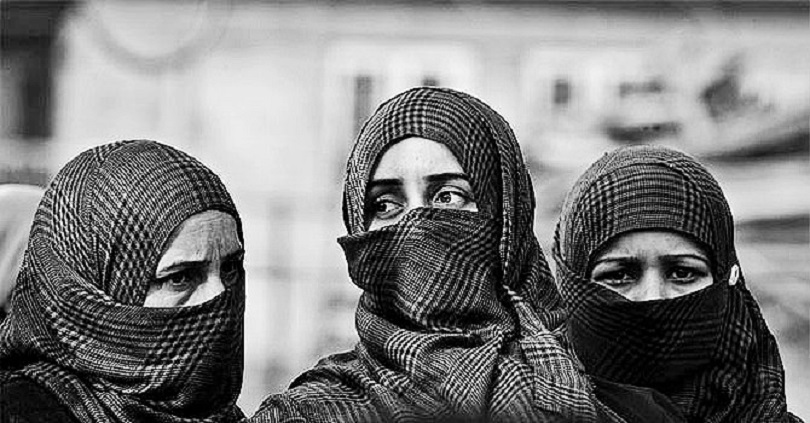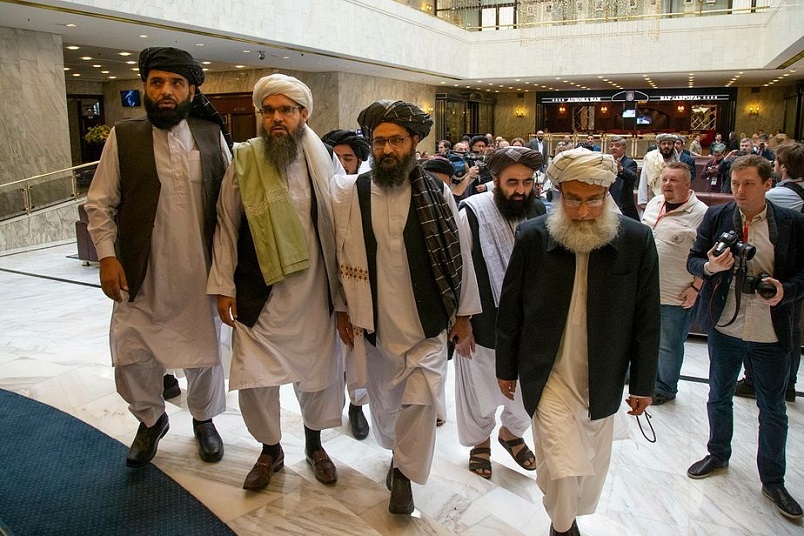
Mainstream feminism has little to no space to adequately cater to Kashmiri Muslim women
THE Taliban takeover of Kabul has, yet again, mobilised nuclear narratives that had earlier enabled the US invasion of Afghanistan. The most visiblised of these discourses is the hue and cry about the rights and status of women there.
The refurbished saviour complex of the west for Afghan women is relevant to Muslim women around the world as it is the same narrative that has often been weaponised against them and their communities. Historically, white feminist discourses were used to colonise people in the same way that the Christian civilising mission was employed. Therefore, the awareness around how elite feminist movements are exclusionary is a must. This is even more relevant given how modernity has dominantly been defined by markers which are touted as universal but are actually western, capitalistic, elite and urban. Even this monolithic view of modernity can be excused if it had not been adjudged absolute.
In today’s world, the pontification of “progress” happens at the cost of those whose identity doesn’t comply with the formulaic structure of existence endorsed by liberal values. The victims of such universalised standards are often Muslims, people of colour, indigenous communities and many such subaltern communities.
Even as this weaponisation of feminist discourse can be located in history, it continues to covertly work to dilute and demonise identities, even today.
The threat of such tricks isn’t as far as it may seem from Kashmir as well. A majority in Kashmir is Muslim. In a place where the duel of narratives is omnipresent, identity is forever a target and casualty. This, in the context of gender, creates a schizophrenia of conflicting models of womanhood in which all models are subordinate to the mainstream version espoused by elite feminists. The usage of the word “elite” is loose but is intended here to include white, upper class and western as well as upper caste feminist models.
Take the example of a recently broadcasted interview of Kashmiri women aimed at showing Kashmir’s “road to progress”. The now-deleted video had a Swedish journalist interviewing four Kashmiri women about their experiences and challenges. The snag in communicating Kashmiri Muslim womanhood was inevitable given how the women being interviewed were trying to explain their “empowered” selves through the yardsticks that a white man would understand. Even as some tried to justify some choices, for instance, the choice to dress modestly — the distance in models led to a vocabulary which couldn’t articulate anything substantial.
This led to an online backlash. Primarily, it was criticised for trying to feed the politics of normalcy in Kashmir. However, it was also called out for being unrepresentative given how women being interviewed failed to responsibly articulate an informed view about Kashmiri women.
Therefore, it is necessary to first empower Kashmir women to understand their own models of femininity — political and religious. It is another matter which one would be adopted by women ultimately. To this end, we need to begin with educating our people about alternate ways to view and understand empowerment.
This also involves trying to honestly acknowledge and then address the systemic oppression that women in Kashmir face. At the same time, all intellectual resources should be employed to clarify misconceptions and cultural misinterpretations of Islam especially in the context of gender and ensure that women have access to personal, social, economic and political empowerment within the ambit of indigenous and relevant models made available to them.
Many young men and women get their education in campuses based in mainland India. Humanities and the social sciences are still heavily western, liberal and upper caste there. Therefore, Kashmiri students often find themselves encountering an influx of information that discredits everything that was integral to their belief systems.
It is alright to distance oneself from beliefs that one deems redundant after careful scrutiny. However, this disengagement with prior beliefs, often Islamic beliefs for Muslim students, primarily happens because they do not have the knowledge to critically engage with western liberal thought.
Additionally, Kashmir Muslim women often find themselves at crossroads when the only way to show their disapproval of patriarchy is through western models. If our society had ever enabled and facilitated an understanding of an Islam which is gender-just, we wouldn’t have found so many disillusioned by it.
We need to empower our models of femininity and make them available to Kashmiri women to choose from — and this model should exemplify gender equality at its best. As Muslims, we should be confident about gender-just spirit of Islam and take it to be our duty to make it accessible to women. Let’s use mosque puplits to educate women and encourage men to actively work towards giving Muslim women their due rights. Now is the time to make women feel accepted, safe and respected.
- Views expressed in the article are the author’s own and do not necessarily represent the editorial stance of Kashmir Observer
Follow this link to join our WhatsApp group: Join Now
Be Part of Quality Journalism |
Quality journalism takes a lot of time, money and hard work to produce and despite all the hardships we still do it. Our reporters and editors are working overtime in Kashmir and beyond to cover what you care about, break big stories, and expose injustices that can change lives. Today more people are reading Kashmir Observer than ever, but only a handful are paying while advertising revenues are falling fast. |
| ACT NOW |
| MONTHLY | Rs 100 | |
| YEARLY | Rs 1000 | |
| LIFETIME | Rs 10000 | |










